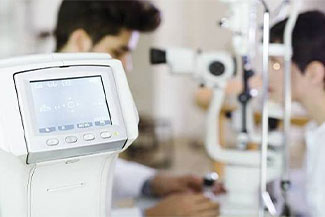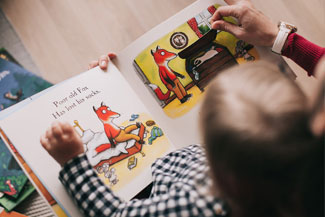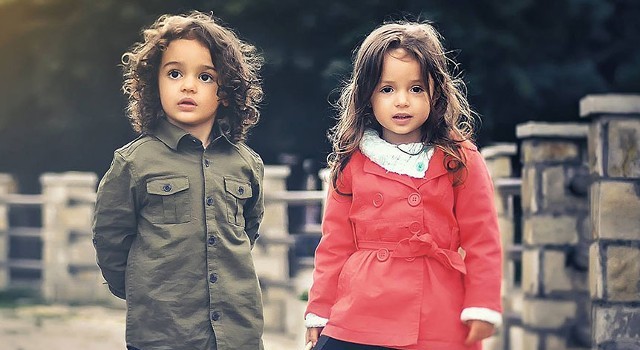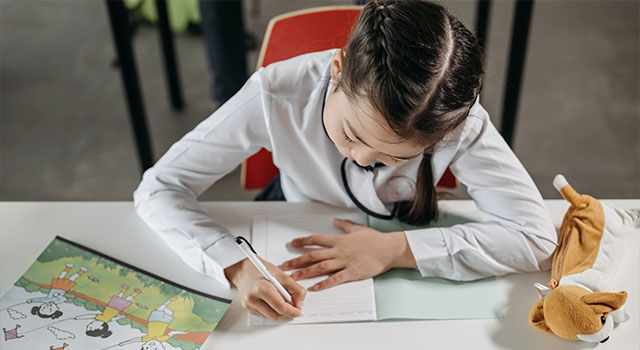
Vision for Children With Special Needs
If you are a parent of a child with special needs, you know that nothing fully prepares you for this unique journey – no books or websites can provide you with all the answers you seek.
That’s especially true when it comes to your child’s eye care and visual needs.
Public school data in the USA shows that up to 14% of all public school students aged 3 to 21 receive special education services. This statistic does not account for all of the children with special needs, as many are educated privately.
Their conditions or disabilities can be divided into four categories:
- Developmental — Down syndrome, autism, dyslexia and processing disorders
- Behavioral/Emotional — ADHD, mental health, or oppositional defiant disorder
- Physical — Muscular dystrophy, multiple sclerosis, chronic asthma and epilepsy
- Sensory Impaired — Blind, visually impaired, deaf, or hearing-impaired
It’s important to note that children with special needs may exhibit certain behaviors that are perceived as part of their syndrome (or a specific diagnosis) when in fact, many of these behaviors may be due to an underlying and undetected vision problem.
Vision Conditions and Special Needs
Did you know that 35 areas of the brain are involved in the processing of visual information, and that up to 80% of the sensory information that arrives to the brain is derived from the visual system?
This means that a deficit in any area of the visual system can create significant challenges for the child.
Children with special needs tend to have a higher incidence of vision problems compared to the general population. These problems may include:
- Nearsightedness (myopia)
- Farsightedness (hyperopia)
- Eye turns (strabismus)
- Eye focusing (accommodation)
- Lazy eye (amblyopia)
- Eye teaming and tracking
- Binocular coordination (stereo vision)
- Depth perception
- Visual information-processing
Vision problems can add to a child’s challenges, as any undetected visual difficulties can affect the child’s behavior, interfere with their reading and learning performance and may even impact their performance of daily routine tasks.
Many children with special needs struggle with multiple challenges that can make academic achievements seem almost impossible to obtain. Working with professionals who are both familiar and comfortable with the requirements of a special needs child can be invaluable in helping families help their children to achieve their potential.
Eye Exam for Special Needs Children
Children with special needs tend to have higher optical prescriptions and may have reduced visual acuity or clarity even with the best prescription.
A comprehensive assessment of children with special needs usually requires a developmental vision evaluation to determine the integrity of their visual skills. If the eye doctor detects reduced vision or visual skills, corrective eyewear and/or a personalized program for vision therapy will be recommended. Early identification of vision conditions is essential in order for treatment to be successful.
Eyeglasses for Special Needs Children
There is now a larger range of options for eyeglasses for children with special needs designed specifically with them in mind. For example, children with Down syndrome have a unique shaped face and nose, which can make it difficult to find the right optical frames. However, with custom-fit eyeglasses, the bridge can be adjusted and the temples modified to keep the glasses from constantly slipping down. Frame designs also include lightweight plastics and flexible materials.
There are also multiple options for optical lenses, such as hi-index lenses, photochromatic lenses and bifocal designs that provide optimum vision and comfort.
 Vision Therapy For Children With Special Needs
Vision Therapy For Children With Special Needs
Vision Therapy can be defined as the science of developing the visual skills needed to achieve clear and comfortable vision.
Vision therapy is a fully customized and personalized treatment program designed to improve and strengthen visual skills, and re-train the child’s visual system to interpret visual input with increased accuracy and ease. Vision therapy is more than just simple eye exercises — it improves brain-eye communication and the effective operation of the child’s visual system.
The aim of vision therapy is to enhance a child’s visual skills such as eye-tracking, focusing and eye teaming, as well as hand-eye coordination and the visual processing speed.
What Does Vision Therapy Treat?
Vision therapy typically includes specific programs to treat:
- Lazy Eye
- Cross Eyes
- Visual tracking
- Eye teaming
- Focusing
- Hand-eye coordination
- Visual processing
How Does Vision Therapy Work?
Vision therapy consists of a personalized program that makes use of eye exercises, lenses, prisms, filters, occluders and other equipment to develop visual skills and efficiently process information from the visual system.
In recent years, thanks to advanced technologies and new computer-based therapies, computer programs for vision therapy have turned traditional vision therapy exercises into fun and interactive activities.
While up to 25% of all children struggle with reading and learning difficulties because of undiagnosed vision conditions, research shows that an even higher percentage of children with special needs may have vision problems that are undiagnosed.
It is therefore crucial for parents and caregivers to understand the importance of bringing a child with special needs for a comprehensive eye exam.
Contact Dr. Marie Kelly and Dr. Daniel Kelly at Kelly Vision Center who will examine your child’s vision and will create a customized vision therapy program specifically for his or her unique abilities and needs.
Our practice serves patients from Goodlettsville, Hendersonville, Gallatin, and Madison, Tennessee and surrounding communities.










